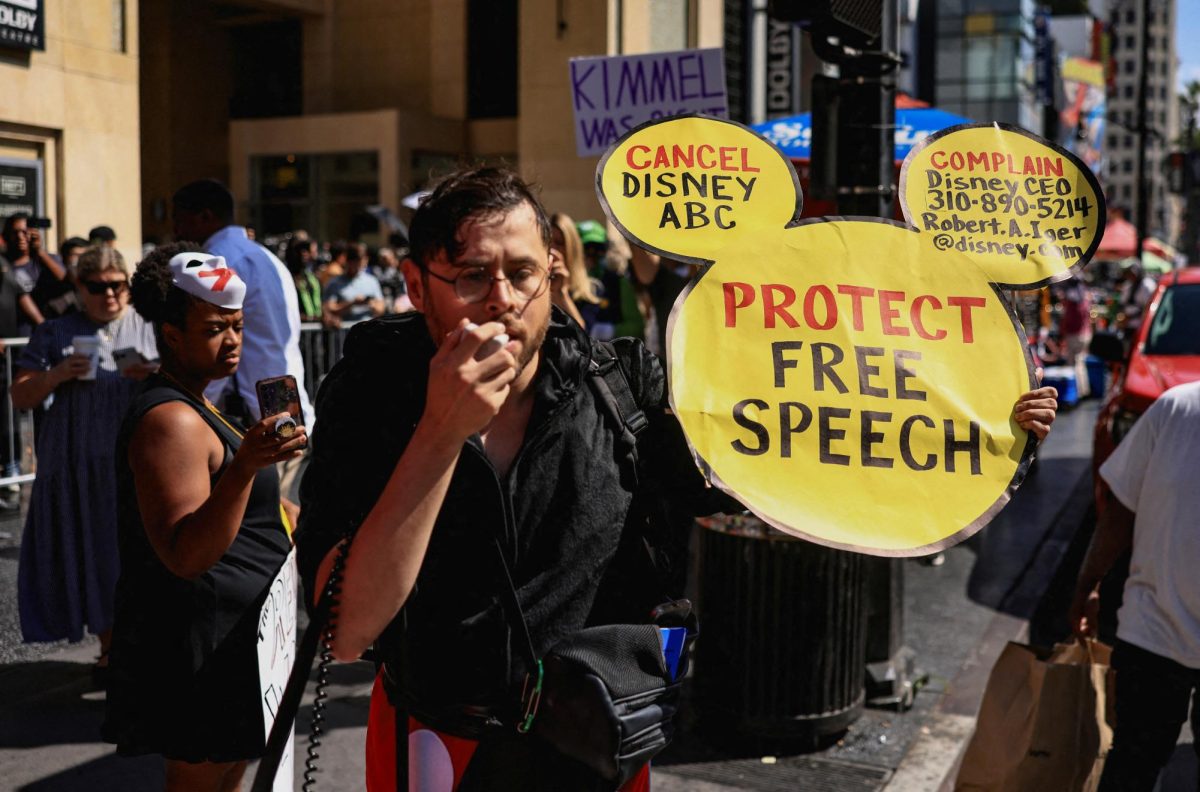On Nov. 22, “Bonhoeffer,” produced and directed by Todd Komarnicki, hit theaters and intrigued movie-goers everywhere. The film follows the life of Reverend Dietrich Bonhoeffer (Jonas Dassler), the German Lutheran theologian who is one of the best-known Christian martyrs of the 20th century for his outspoken dislike of Hitler. Bonhoeffer, who was imprisoned for his outspoken hatred of the Third Reich, was executed on April 9, 1945, two weeks before his fellow prisoners were liberated.
The bulk of the film unfolds in flashbacks, where the audience is taken through Bonheoffer’s life, pinging back and forth between his childhood, young adulthood and the last moments of his life. It’s a cinematic journey that masterfully connects the profound Christian dilemmas that Bonhoeffer faces throughout his life and World War II. When diving into his actions against the Nazi regime, the film characterizes Bonhoeffer’s transformation from a pacifist pastor to a daring conspirator, risking his life and everything he has worked for in the process.
From a cinematic angle, the visual storytelling of the narrative is both haunting and evocative as it captures the stark contrast of Bonhoeffer’s world—from the sanctity of the Church to the shadows of Germany during this period. The muted color palettes and time-accurate settings immerse the audience into the era, while the soundtrack supports the tension and emotional gravity of Bonhoeffer’s mission to assassinate Hitler.
During his childhood, Bonhoeffer loses his brother to the war and finds himself lost. That is, until his mother gives him one item that was left for Bonhoeffer: a bible. This jumpstarts Bonhoeffer’s dedication to his faith and the Christian religion but also sets the stage for the future dilemmas he will have to work through in order to join the resistance against Hitler.
One of the standout scenes in the film is the operation where Bonhoeffer and his allies attempt to smuggle information out of Nazi Germany. The sequence is a masterclass of suspense, with the camera lingering on every glance and whispered conversation, adding to the emotional depth of each secret and paranoia. When Bonhoeffer is challenged by other countries who refuse to help because they are fearful of invasion, his reaction is not only immediate but deep.
“Invasion? Invasion? My country was invaded, from within!” Bonhoeffer said in response to Martin Niemoller, the pastor of the English Church.
This statement not only highlights how Germany was depleted because of their very own leader, but also emphasizes Bonhoeffer’s courage to actively resist Hitler’s leadership. As well as his courage to ask for international assistance, Bonhoeffer was accused of not actually being faithful when agreeing to the plan regarding Hitler’s assassination. However, Bonhoeffer repeatedly described the German Church as religionless Christianity throughout the film because of their obedience to Hitler and their reluctance to speak out, even when Hitler’s control went firmly against faith.
“Faith without action is no faith at all,” Bonhoeffer said.
Bonhoeffer’s resistance grew as he continually witnessed barbarism in the form of persecution and imprisonment of Jews, and the brutal intimidation of his fellow clergymen. In his young adulthood, Bonhoeffer goes to America and meets his good friend, Frank Fisher (David Jonsson). Fisher is an African American man who shows Bonhoeffer the consequences of being black in the 1900s but also the glory of the church he attends. Bonhoeffer’s love for faith only grows from his experience with Fisher and the Harlem Church.
Bonhoeffer, only a new, bleary-eyed witness to racism in America during this time, explained to Fisher that he could never imagine that kind of hate in Germany. In an almost foreshadowing fashion, Fisher replied with a hauntingly truthful response.
“Hatred comes in every color, my friend,” Fisher said.
And less than a decade later, hatred controlled Bonhoeffer’s home.
In a world where courage was rare in general, and even harder to find during World War II in Germany, Bonhoeffer was a martyr of bravery in times of need, an honest leader in an era when corruption ruled and a faithful follower of God when the Church was silenced, even while he planned the assassination attempt on Hitler.
With the ending of the movie comes the ending of Bonhoeffer’s life, depicting his hanging in not only a detailed way but also reflective of him meeting his destiny, meeting his one true leader: God.
The film challenges viewers to reflect on the ethical complexities of resistance, rebellion and moral dilemmas in times where courage is extremely rare. It is a poignant reminder of the power of faith and bravery in the face of overwhelming evil, making the movie a must-watch.





